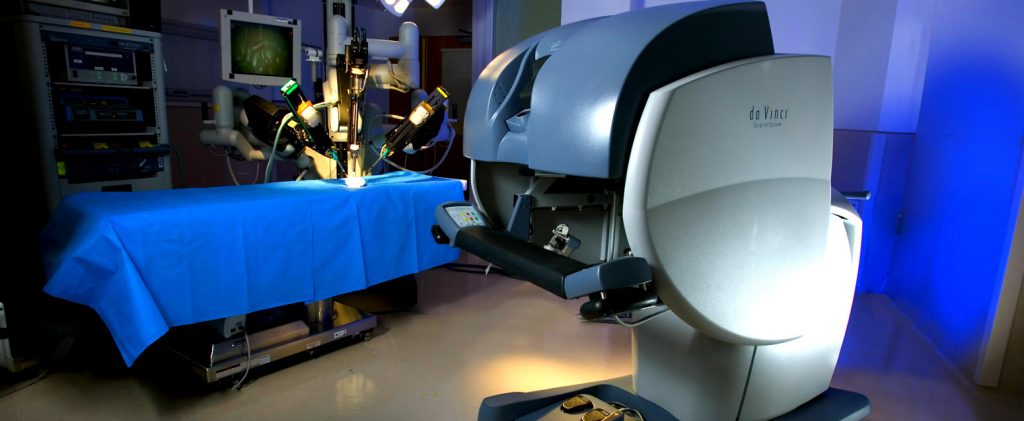Robotic and Minimally Invasive Surgery

Robotic Surgery
Robotic surgery is a form of minimally invasive surgery utilizing a surgical platform where surgical instruments are attached to mechanized “arms” that are controlled by a surgeon at a console. The surgeon’s hand movements are then transmitted to the robotic instruments to perform the procedure. The surgeon is able to emulate actual wrist movements with the robotic instruments, as opposed to performing laparoscopic surgery with straight, non-articulating instruments. Robotic surgery has seen exponential growth and expansion over the last decade. Now, most surgeries for removal of the prostate are performed robotically. Additionally, there has been tremendous growth in robotic surgical applications for the kidney, bladder, and reconstructive surgical procedures.
Minimally Invasive Surgery
Minimally invasive surgery typically involves performing surgical procedures through small incisions. Minimally invasive surgery included laparoscopic surgery, where instruments are passed into the body through these small incisions to perform the surgical procedure. Laparoscopic surgery has revolutionized surgery in general, and Urologic surgery in particular.
In 1992, the first laparoscopic nephrectomy (removal of the kidney) was performed and, since then, laparoscopic surgery has seen tremendous growth and expansion. Laparoscopic surgery has been utilized for nearly every urologic surgical procedure, from surgical removal for cancer (adrenal, kidney, bladder, prostate) to complex reconstructive procedures and pediatric urologic procedures.
Minimally invasive surgery has demonstrated significant benefits in patient outcomes, including the length of hospital stay, less blood loss, and earlier return to normal activities. The goal of minimally invasive surgery is to duplicate open surgical techniques without large incisions and to minimize complications and convalescence.
